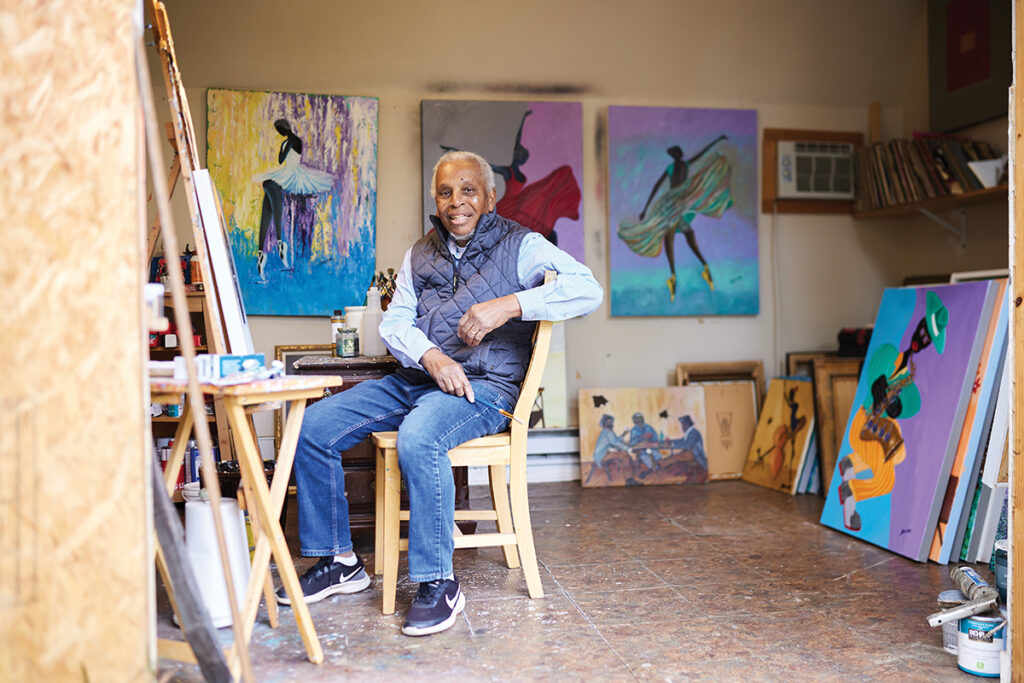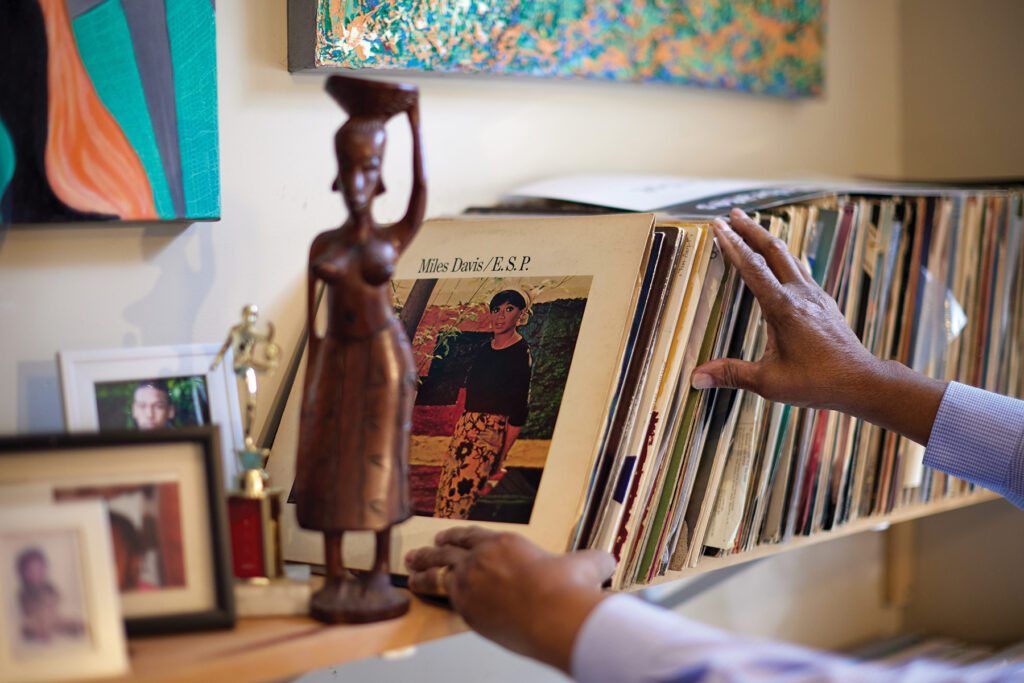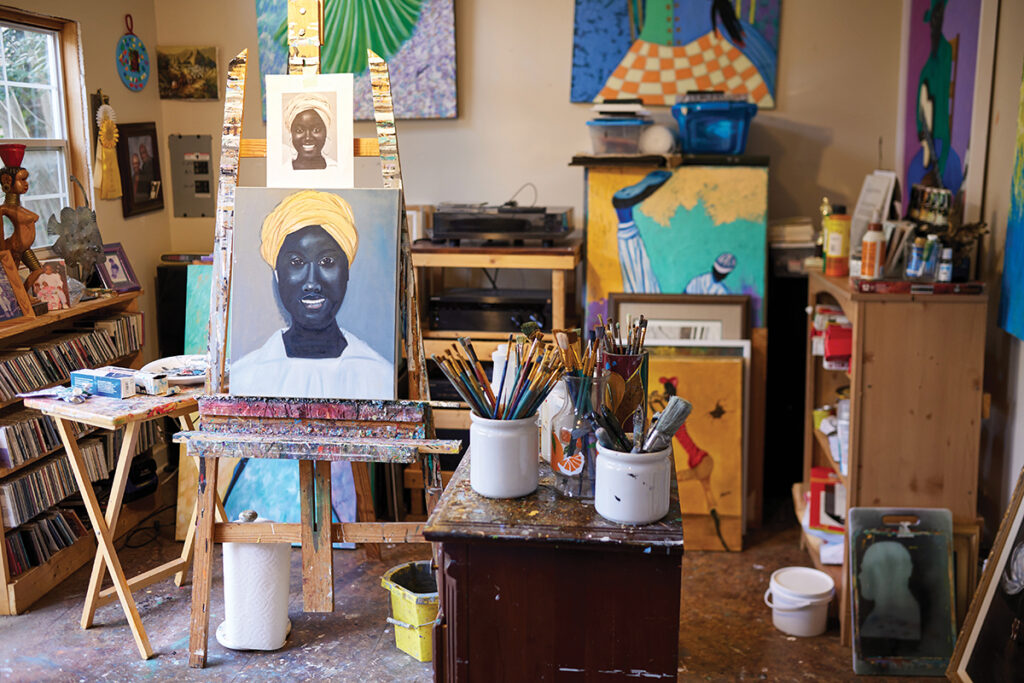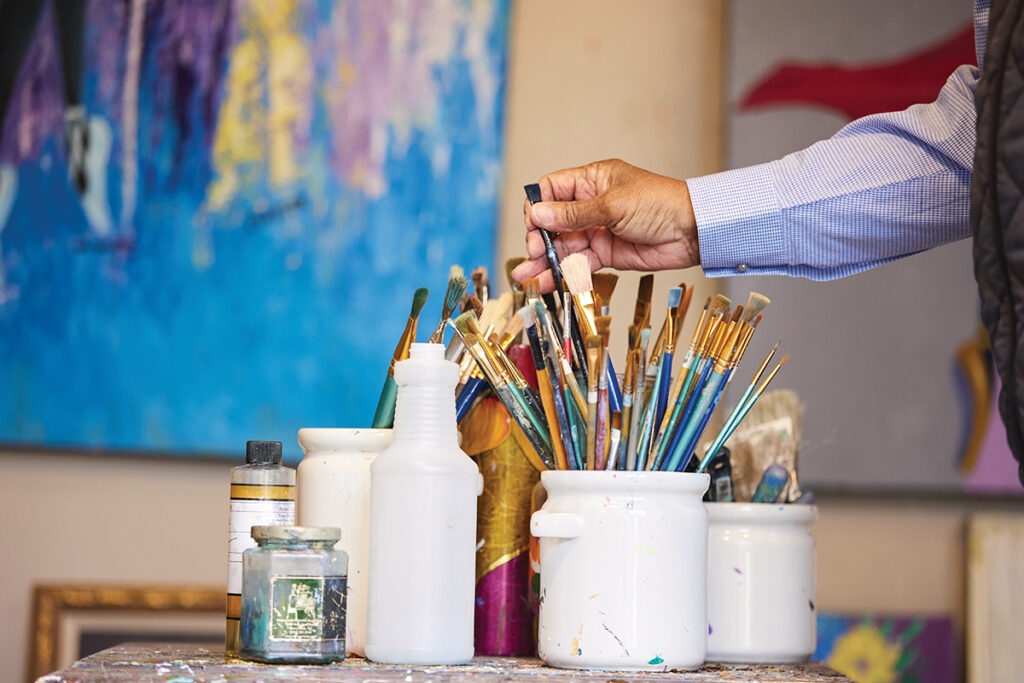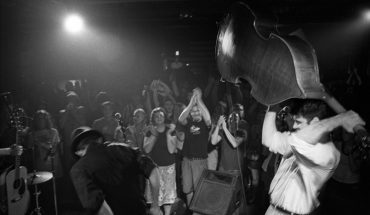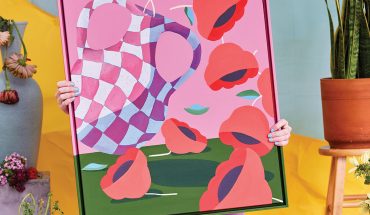The West Raleigh artist fuses two lifelong passions — painting and jazz — in a fulfilling post-retirement career.
by Addie Ladner | photography by Samantha Everette
For Ed Baxter, jazz and art have been constants throughout every phase of his life. They offered comfort in childhood and wartime, then a relaxing outlet through his adult life. Today, these two passions fuse together in Baxter’s encore career as a professional artist.
Baxter was born in Raleigh’s Saint Agnes Hospital in 1947. Jazz infuses his earliest childhood memories of sitting by the radio with an intent ear, listening to the sounds of Louis Armstrong. He often had paper and pencils nearby, sketching Mickey Mouse and Thunderbirds. When Baxter was around 10 years old, those voices began to appear as faces on television.
“I’ll never forget when I started seeing jazz musicians like Armstrong and Nat King Cole. It was a big deal because they were Black,” Baxter recalls. “Everyone in the house would stop what they were doing to watch.”
An art teacher named Mrs. Bullock at J.W. Junior-Senior Ligon High School (now Ligon Magnet Middle School) introduced him to oil paints. “I’ve loved them ever since — the smell, the look, the feel, the stroke,” he says.
Baxter brought albums and art supplies to Turkey in 1967, where he served for 16 months in the military; he played them on a turntable purchased at the Army exchange store. There, friends introduced him to more progressive jazz like Miles Davis and John Coltrane.
“I loved Duke Ellington and Count Basie and Sinatra. But learning about these guys just opened me up to even more,” he says. He still has those albums.
Baxter’s two passions stayed with him over a 30-year career with the post office and as he and his wife, Carolyn, raised their children, Felicia and Ron. “I thought all dads were eccentric and painted after work while listening to jazz,” says Ron, who is now a jazz musician in Raleigh. Baxter hoped to turn his hobby into more, but, he says,“in the 60s and 70s, there was nowhere for Black artists to exhibit their art.”
When Raleigh’s Visual Art Exchange (VAE) was formed in 1980, Baxter asked then-director Sarah Powers if he could exhibit. She agreed. His two 24-by-48-inch pictures of jazz musicians — one playing the saxophone, the other a bass — sold immediately, each for $950. “That was a happy day for me,” he says.
Baxter retired from the post office in 2006, and committed to working as an artist full-time. He applied to juried art shows, many of which he was accepted to. He built a studio behind his West Raleigh home, which has shelves packed with albums, CDs, art supplies and mementos.
Baxter can paint pretty much any style, but his signature work depicts stylized Black musicians, dancers and athletes. Movement and sound come to the forefront through bold colors and contrasting textures. Baxter filters reality into the image on canvas. “It’s always from my imagination,” he says.
In one painting, a woman sits on a chair, playing the cello. But the instrument isn’t depicted in wood tones: its body is iridescent aqua and purple, the fingerboard a bright blue. Baxter captures her focus, the movement in her positioning; the background and her clothing are blocked in gold, teal and orange. “Jazz singers and musicians improvise, just like artists do — just like I do,” he says. “They’re the same abstracts.”
Now, Baxter’s work has been displayed all over the country. Locally, he’s exhibited at the North Carolina Museum of History, Contemporary Art Museum, Dorothea Dix Park and dozens of other galleries. He’s had solo shows at the Sertoma Art Center, Pullen Art Center and Triangle Cultural Art Gallery.
A spiritual man, Baxter considers some of his most meaningful work to be a recent commission from the Virginia Theological Seminary. A celebration this fall will honor the seminary’s bicentennial, and it includes an initiative to acknowledge and make amends for the fact that the institution was built by slaves.
The seminary commissioned Baxter to paint two pieces: Sin shows a row of slaves in a cotton field with a white man holding a whip, while Grace shows a peaceful Black ballerina soaring over a blue-and-red backdrop.
“The fact that they’ll be there permanently means something,” says Baxter. Because more than anything, Baxter wants the viewer to feel his art, not just see it — to hear the music of the man playing the saxophone, experience the grace of the ballerina or feel the injustice of slavery. “I always pray for my work to be seen,” he says. “I don’t pray for fame but for my work to be seen all over the world and to mean something.”
This article originally appeared in the April 2023 issue of WALTER magazine.

